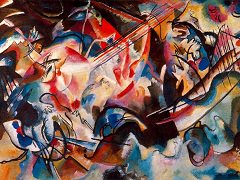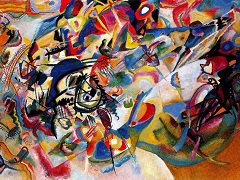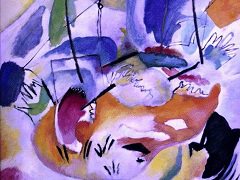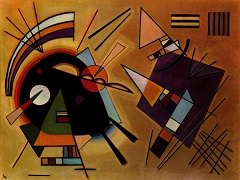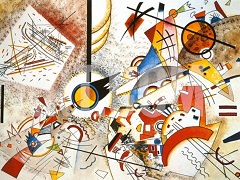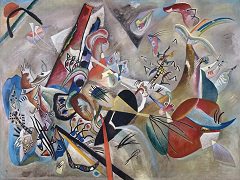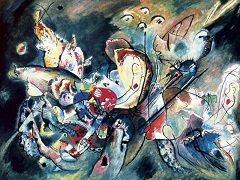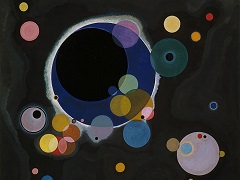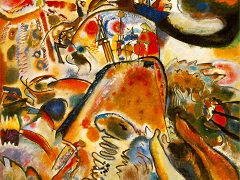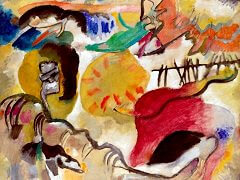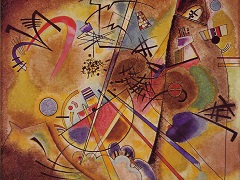Sunday: Old Russia, 1904 by Wassily Kandinsky
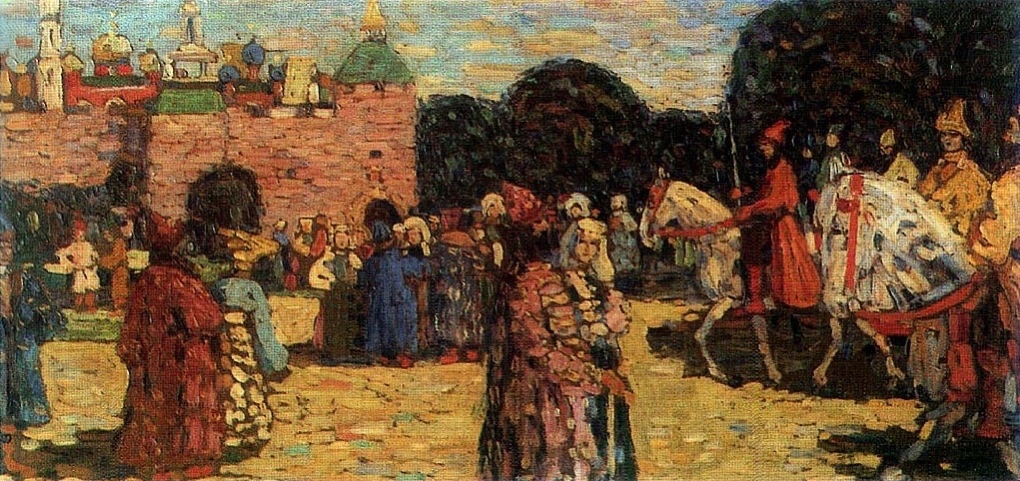
With no formal art training, Kandinsky left Moscow, his home for the first three decades of his life, to pursue a career in painting. Unlike most men of 30 years of age, he turned his back on an established and very promising academic career in furtherance of what seemed a pipe dream. Kandinsky had been greatly moved by on exhibition in Moscow of Monet's Haystacks series of pictures, which were currently touring.
Kandinsky chose to start his training and new career in a foreign city, Munich, where he moved with his young wife in 1896. Munich was a very cosmopolitan city and had recently witnessed the 'new art' of the Sezession ('Secession'). He began working at the studio of Anton Azbe (1862-1905), who taught him anatomical drawing, but also, more importantly, a Divisionist style of painting. It was a derivative of Impressionism that juxtaposed contrasting colours in order that each colour was defined by its complementary. There is, however, a strong sense of Kandinsky's own Russian traditional folklore in this work, something that was to be a recurrent theme in later years.

